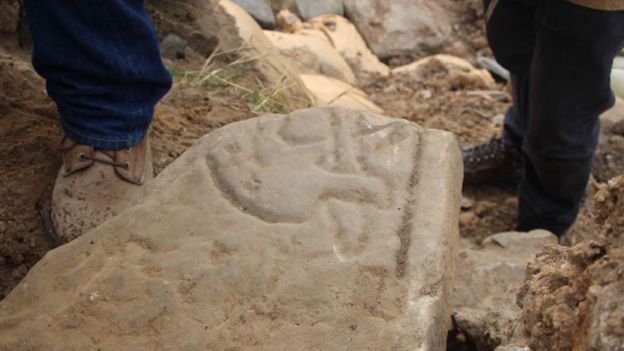Enigmatic Stones Of The Picts: Orkney’s Unique Stone With Dragon-Like Creature And Cross Carving
Ellen Lloyd - AncientPages.com - Carved stones represent a unique legacy of the Picts.
Many of them give evidence of the advanced skills of artists; some of the stones with very complex decorative motifs depict Christian crosses and crescents or birds or animals, both real and mythical.
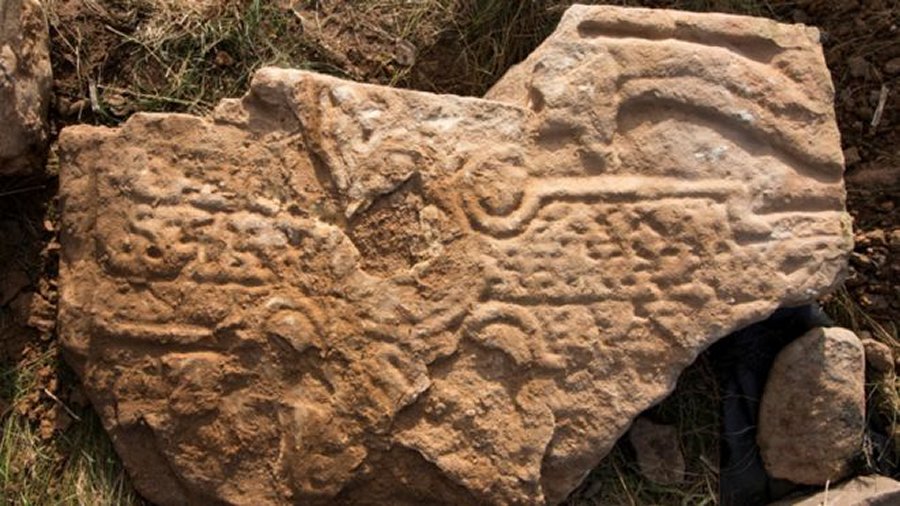 This Pictish Cross Slab - estimated to be about 1,300-year-old - was found after a storm. Image credit: Dr Hugo Anderson-Whymark - Image source
This Pictish Cross Slab - estimated to be about 1,300-year-old - was found after a storm. Image credit: Dr Hugo Anderson-Whymark - Image source
Generally, Pictish stones are carved (or incised) with symbols and different designs. They have been located north of the Clyde-Forth line and on the Eastern side of Scotland. The Pictish stones are undoubtedly historical evidence of the Picts' presence in this part of the country. Dated from the 6th to 9th century, a period during which the Picts became Christianized.
Approximately 350 objects categorized as Pictish stones have survived and have long fascinated scholars.
Image credit: UHI Archaeology Institute
In Orkney, the Picts carved the salmon, bull, deer, and birds, including the eagle and goose. There are also several other designs, such as the infamous Pictish Beast, other monsters-like figures, and "V-rod," "double disc and Z-rod," "mirror and comb," and "triple disc," of which meaning is unknown.
Many theories have tried to explain the Pictish symbols. Why were these enigmatic stones erected, and what was their significance?
Were they markers or perhaps commemoration stones related to people and events?
Several hundred carved Pictish stones have been found mainly in northern and eastern Scotland. Not long ago, another unique Pictish stone depicting a dragon-like creature and a cross carving was discovered after a storm in Orkney, Scotland.
Known as a Pictish cross-slab, it is only the third stone of this type to be found on the islands.
The stone is estimated to be about 1,300-year-old and has an intricately carved cross flanked by the dragon, or beast, and on the reverse side, there is another Pictish beast design staring out from the stone face, with beak open grasping what could be the remains of a staff.
Researchers say that carved Pictish cross-slabs are rare across Scotland, with only two being discovered in Orkney. Therefore, it is a significant find that can shed more light on a period in history when Orkney society began to embrace Christianity.
Some examples of the Pictish Stones:
Left: Front of Woodwrae stone, from Woodwrae, Angus, now on display at Museum of Scotland. Image credit: Catfish Jim and the soapdish - CC BY-SA 3.0; Middle: Hilton of Cadboll Stone (replica); Class II. Image uploader: Deacon of Pndapetzim - CC BY-SA 2.5; Right: Eagle Stone; Class I - Eagle Stone. Clach an Tiompain in Gaelic, this is a Class 1 incised stone, with a horseshoe symbol above an eagle. Image uploader: Anne Burgess - CC BY-SA 2.0
No detailed records of Pictish history survived. The mystery of the carved Pictish stones cannot be entirely explained. The stones were believed to be set up to record Pictish lineages and alliances, but no one knows how this intriguing Pictish system functioned.
Foster, Sally M. writes in 'Picts, Gaels and Scots': "The Picts would definitely not hold the same place in the hearts of the world if their unique symbols did not exist. Found in much of Pictland, and almost exclusively there, they comprise a range of diverse motifs that were placed on sculpted stones, cave walls, everyday objects and splendid jewellery.
Their precise meaning eludes us, although interpretations abound. But their distinct nature should not obscure the fact that they are but part of the Pictish artistic repertoire and that in most other respects the material culture of the Picts was little different from that of their neighbours, with whom they shared much in common.
In fact, the study of the ornament used in these symbols can contribute to placing Pictish art and society in a wider, more familiar context. Nonetheless, there remain overall many aspects of their art that make the Picts stand out from their European neighbours." 1
Written by - Ellen Lloyd – AncientPages.com
Updated on December 20, 2022
Copyright © AncientPages.com All rights reserved. This material may not be published, broadcast, rewritten or redistributed in whole or part without the express written permission of AncientPages.com
Expand for referencesFoster, Sally M. 'Picts, Gaels and Scots
More From Ancient Pages
-
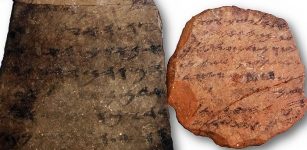 Widespread Literacy In Biblical-Period Kingdom Of Judah – Study Confirms
Archaeology | Sep 11, 2020
Widespread Literacy In Biblical-Period Kingdom Of Judah – Study Confirms
Archaeology | Sep 11, 2020 -
 On This Day In History: King Alexander II Was Crowned At Scone, Scotland – On Dec 6, 1214
News | Dec 6, 2016
On This Day In History: King Alexander II Was Crowned At Scone, Scotland – On Dec 6, 1214
News | Dec 6, 2016 -
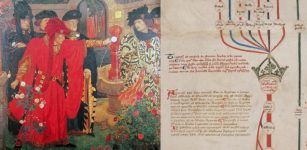 Unique Canterbury Roll – Ancient Manuscript Reveals Its Secrets About History Of England
Archaeology | Jan 5, 2018
Unique Canterbury Roll – Ancient Manuscript Reveals Its Secrets About History Of England
Archaeology | Jan 5, 2018 -
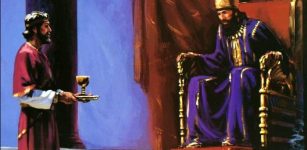 Cupbearer Was Privy To Conversations And Political Secrets Hidden Behind Closed Doors
Featured Stories | Oct 5, 2020
Cupbearer Was Privy To Conversations And Political Secrets Hidden Behind Closed Doors
Featured Stories | Oct 5, 2020 -
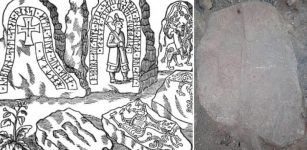 Unique Lost Runestone Of The Hunnestad Monument Finally Found After 300 Years In Sweden
Archaeology | Dec 16, 2020
Unique Lost Runestone Of The Hunnestad Monument Finally Found After 300 Years In Sweden
Archaeology | Dec 16, 2020 -
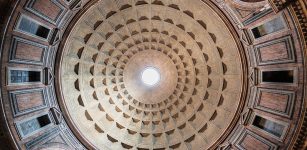 Advanced Ancient Knowledge Of Chemistry – From Chrome Plating To Nanotubes
Ancient Technology | Jun 12, 2019
Advanced Ancient Knowledge Of Chemistry – From Chrome Plating To Nanotubes
Ancient Technology | Jun 12, 2019 -
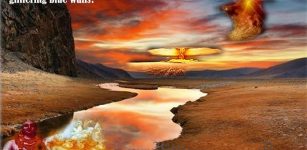 Physical Evidence Of Ancient Atomic Wars Can Be Found World-Wide
Civilizations | Oct 6, 2015
Physical Evidence Of Ancient Atomic Wars Can Be Found World-Wide
Civilizations | Oct 6, 2015 -
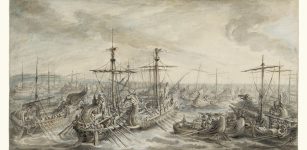 Battle Of Cape Ecnomus: One Of The Greatest Naval Battles In History
Ancient History Facts | Jun 17, 2019
Battle Of Cape Ecnomus: One Of The Greatest Naval Battles In History
Ancient History Facts | Jun 17, 2019 -
 Kantyua And Tantyua – Sacred Tibetan Books Reveal Incredible Lifespan Of The Gods
Artifacts | Mar 18, 2019
Kantyua And Tantyua – Sacred Tibetan Books Reveal Incredible Lifespan Of The Gods
Artifacts | Mar 18, 2019 -
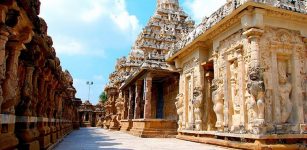 Remarkable Kailashanatha Temple And Unique Passage Of Life Cycle Including Aging, Death And Rebirth
Civilizations | Mar 26, 2017
Remarkable Kailashanatha Temple And Unique Passage Of Life Cycle Including Aging, Death And Rebirth
Civilizations | Mar 26, 2017 -
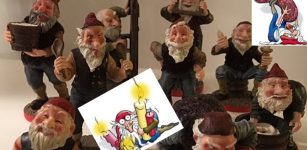 Gryla: Cannibalistic, Evil Troll And Her Sons ‘Yule Lads’ – In Icelandic Folklore
Christmas Traditions | Dec 11, 2019
Gryla: Cannibalistic, Evil Troll And Her Sons ‘Yule Lads’ – In Icelandic Folklore
Christmas Traditions | Dec 11, 2019 -
 How Did Ancient Romans Grow Their Gardens?
Ancient History Facts | May 25, 2018
How Did Ancient Romans Grow Their Gardens?
Ancient History Facts | May 25, 2018 -
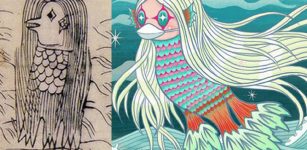 Yokai Amabie – Protective Ancient Spirit That Can Ward Off Epidemics
Featured Stories | Mar 30, 2020
Yokai Amabie – Protective Ancient Spirit That Can Ward Off Epidemics
Featured Stories | Mar 30, 2020 -
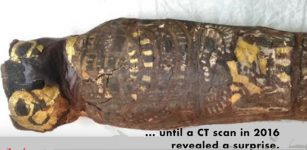 Micro-CT Scans Revealed: It Wasn’t Egyptians’ Falcon-Headed Deity But Malformed Human Baby
Archaeology | Jun 2, 2018
Micro-CT Scans Revealed: It Wasn’t Egyptians’ Falcon-Headed Deity But Malformed Human Baby
Archaeology | Jun 2, 2018 -
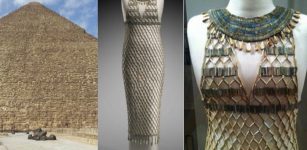 Amazing 4,500-Year-Old Egyptian Bead-Net Dress Found In Giza Tomb Restored
Featured Stories | Jun 27, 2023
Amazing 4,500-Year-Old Egyptian Bead-Net Dress Found In Giza Tomb Restored
Featured Stories | Jun 27, 2023 -
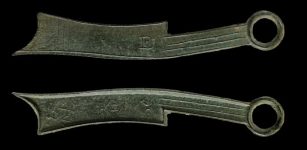 Scientists Decipher 2,300-Year-Old Chemistry Formulas Revealing Ancient Metallurgy Was More Complex Than Previosuly Thought
Ancient Technology | Aug 10, 2022
Scientists Decipher 2,300-Year-Old Chemistry Formulas Revealing Ancient Metallurgy Was More Complex Than Previosuly Thought
Ancient Technology | Aug 10, 2022 -
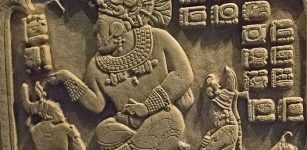 Fall Of The Ancient Maya Civilization Not Caused By Climate Change And Environmental Degradation – Scientists Say
Archaeology | Nov 18, 2021
Fall Of The Ancient Maya Civilization Not Caused By Climate Change And Environmental Degradation – Scientists Say
Archaeology | Nov 18, 2021 -
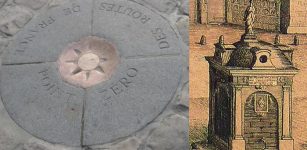 Paris Point Zero And The Mysterious Statue Of Monsieur Legris
Featured Stories | Dec 4, 2018
Paris Point Zero And The Mysterious Statue Of Monsieur Legris
Featured Stories | Dec 4, 2018 -
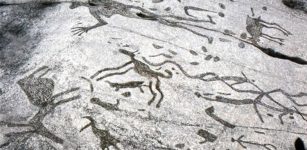 Peterborough Petroglyphs Could Offer Evidence Ancient Celts Visited Canada 2,000 Years Ago
Archaeology | May 27, 2015
Peterborough Petroglyphs Could Offer Evidence Ancient Celts Visited Canada 2,000 Years Ago
Archaeology | May 27, 2015 -
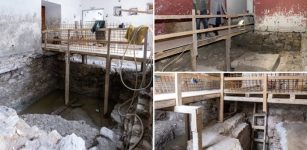 Unexpected Discovery Of Roman Baths Under Split City Museum In Croatia
Archaeology | Dec 7, 2023
Unexpected Discovery Of Roman Baths Under Split City Museum In Croatia
Archaeology | Dec 7, 2023

